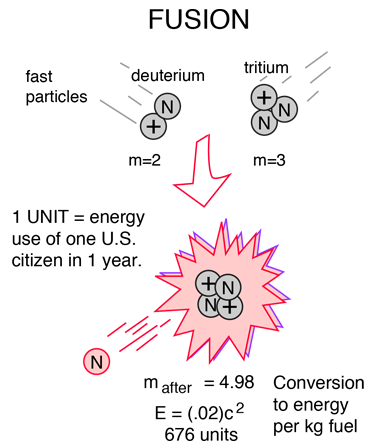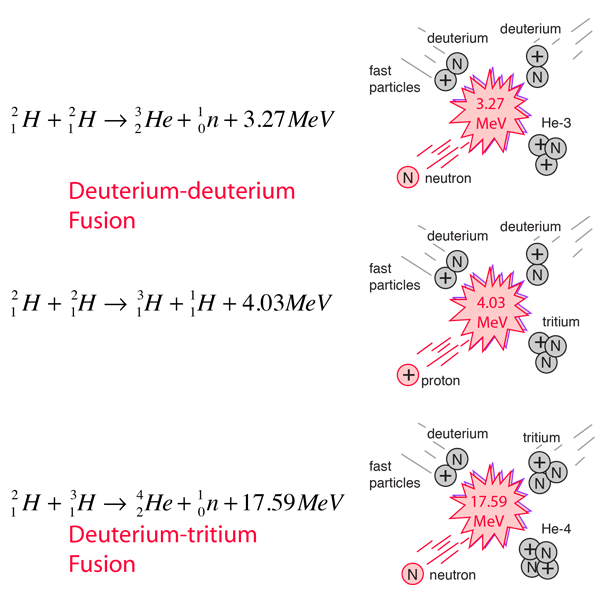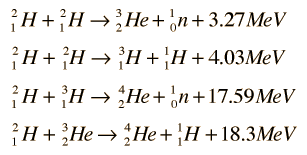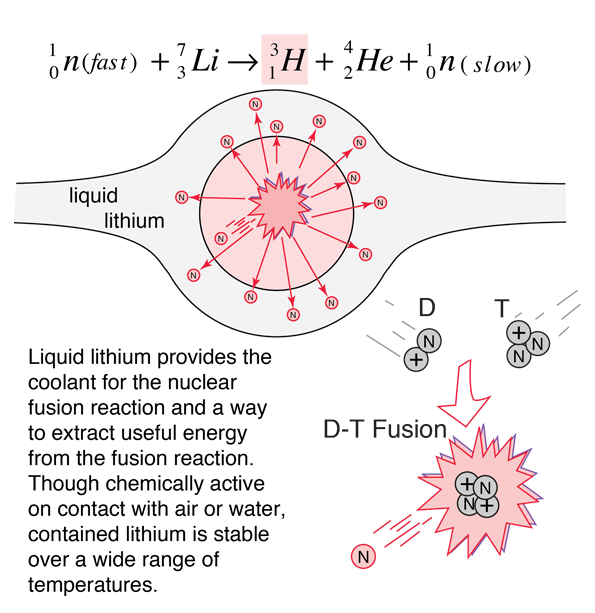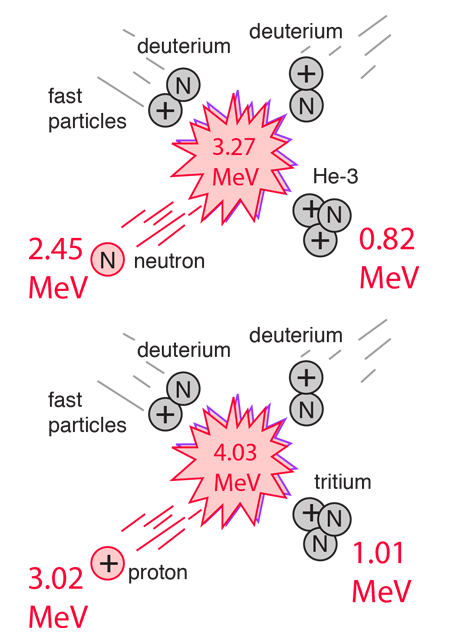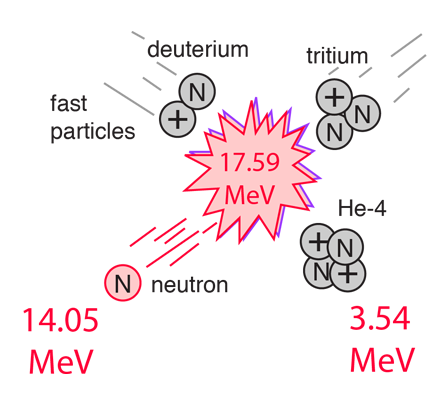Nuclear Fusion
If light nuclei are forced together, they will fuse with a yield of energy because the mass of the combination will be less than the sum of the masses of the original individual nuclei. If the combined nuclear mass is less than that of iron at the peak of the binding energy curve, then the nuclear particles will be more tightly bound than they were in the lighter nuclei, and that decrease in mass comes off in the form of energy according to the Einstein relationship. For elements heavier than iron, fission will yield energy.
For potential nuclear energy sources for the Earth, the deuterium-tritium fusion reaction contained by some kind of magnetic confinement seems the most likely path. However, for the fueling of the stars, other fusion reactions will dominate.
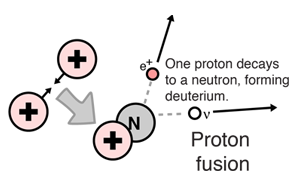 | 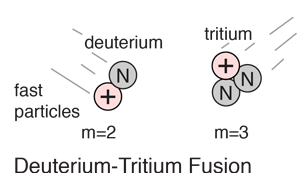
|
The energy analysis of a nuclear fusion event involves evaluating the masses before and after it and taking the difference. The decrease in mass used in the Einstein relationship represents the energy yield Q.
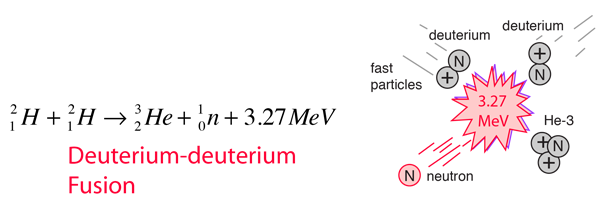
Using deuterium fusion with a neutron yield as an example, it is typical to use the units GeV/c2 to represent the masses of the constituents. In those units the above fusion reaction becomes
The difference in mass expressed in energy units represents the energy yield Q of the nuclear fusion reaction.
While the energy yield is very small compared to the masses of the nuclei involved in the fusion, it is nevertheless a very large energy yield. The nature of this energy is not specified by the above fusion reaction, but the fusion energy release can be analyzed by conservation of energy and momentum and one finds that the neutron carries 75% of the energy after the fusion.
| Fusion reactors | Conditions for fusion |
Fusion concepts
| HyperPhysics***** Nuclear | R Nave |
